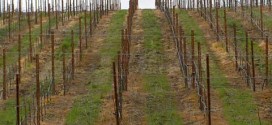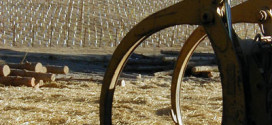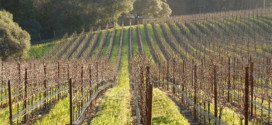To the Sonoma County Permit and Resource Management Department, May, 2002
Scott Briggs
Project Manager of the Sonoma County General Plan Update Project
Sonoma County Permit and Resource Management Department
2550 Ventura Avenue
Santa Rosa, CA 95403
Re: THP/Forestland Conversions Applications 1-00-147 SON, 1-00-140-SON, 1-00-238 SON, 1-01-171 SON, 1-01-223 SON, 1-01-202 SON, 1-01-223 SON, 1-02-019 SON, etc.
Dear Scott Briggs and Staff,
A major issue facing coastal forests is whether they will survive as the “Redwood Empire” or disappear and be replaced by the “Red Wine Empire”. Numerous applications have been filed with California Department of Forestry requesting permission to cut down hundreds of acres of forest and replace it with wine vineyards. Some projects in the planning stages are rumored to be as large as 4,000 to 10,000 acres. The entrepreneurs have targeted land that lies in a coastal climate zone that they say is ideal for pinot noir grapes. The largest project proposed has been one submitted by a corporation based in Spain. With this recent wave of applications, functioning redwood and conifer forest is being targeted for permanent conversion to intensive, irrigated, commercial agriculture. These conversions entail clear cutting, ripping the soil to a four feet depth, re-contouring, trapping of rain water in large reservoirs, ground water pumping, erecting miles of six foot high wildlife fencing and wire trellises, application of herbicides and pesticides, altering the watershed’s hydrological regime, changing ambient air and water temperatures due to deforestation, habitat fragmentation and loss of biodiversity, etc. And if economics sour for wine grapes as they have started to this year, other development could be proposed to replace the unprofitable vineyards.
Of special concern in this matter is zoning that technically does not prevent the clear cutting and replacement with non-food agricultural crops. These are crucial times for coastal forests. Continuing unsustainable timber harvesting practices abound and market forces such as the presently skyrocketing returns on vineyard operations make potential vineyard land scarcer and conversions more appealing. The attitude of those applying for these conversions with their subsequent permanent loss of timber production lands might be typified by the following quote from a local timber harvest plan submitted with a conversion to vineyard.
“The conversion of timberland to agriculture is not a long-term conversion but only a crop rotation. As the price of grapes falls you will see people converting from vineyards to other compatible uses (forestry, grazing, farming, etc….) as the market continues to change. The conversion of 88 acres of timberland to agricultural land will be a short- term loss of .029%, to the Sonoma Co. timber base.” Jacobzoon RPF
Any study of the history of the forests of the west coast, or the continent in general will reveal that we presently have a miniscule fraction of the standing forests that were here a few generations ago. The loss of this forestland progressed for most part in these “imperceptible” increments. These losses have brought us to the situation we are in today.
The destruction of irreplaceable ecosystems by this encroachment has, however, been very perceptible to the many millions of organisms and species that are displaced to the remaining habitat or perish, not being able to make the move. Habitat fragmentation is a result of the “cookie cutter” nature of these conversions in traditionally forested areas. Habitat is lost and ancient migration routes and food sources are permanently interrupted. The high fences that are erected exclude terrestrial wildlife and prevent access to streams, rivers, and other water and food sources. The converted land is clear cut, the remaining living stumps with their irreplaceable genetic adaptations are ripped out and the land is plowed in furrows to prepare it for a program of intensive management which includes pesticides and herbicides.
The zoning of these conversion applications is presently “Resources and Rural Development” (RRD). Although vineyard planting is technically allowed with this zoning, the intent of the County’s General Plan is clear. “The primary purpose of this land use category is to protect lands needed for commercial timber production and to protect natural resource lands including watershed, fish and wildlife habitat, and biotic uses.”
The County of Sonoma has submitted comments on these applications and has gone on record to say it objects to conversion of timberlands even though the property is not in Timber Preserve.
The County General Plan Resource Conservation element contains goals and policies regarding timber resources:
Goal RC-4: Preserve, sustain and restore forestry resources for their economic, conservation, recreation, and open space values.
Goal RC-5: Promote and maintain the County’s diverse plant and animal communities and protect biotic resources from development activities.
Policy RC-5a: Apply the “Resources and Rural Development” land use category where it is the County’s intent to manage and conserve natural resources, including wildlife and vegetation habitats while allowing a compatible level of residential development.
Other General Plan policies that should be considered in this matter are:
RC-4c: Where applicable, comment on timber harvest plans in support of increased protection of Class III streams.
Some conversions propose to underground Class III watercourses, which is in direct conflict with the above policy. Elimination of these waterways and associated riparian habitat only increases the adverse impacts of this project. Improper classification of streams is a common problem in THPs and many of the Class III’s are being channeled into reservoirs for irrigation and frost control.
RC-3h: Require proof of adequate groundwater in Class III and IV water areas. Test wells may be required in Class III areas. Deny discretionary applications unless a geologic report establishes that groundwater supplies are adequate and will not be adversely impacted by the cumulative amount of additional development.
These coastal areas are considered a Class III area–marginal water availability– and the above policy would apply to any discretionary project. How will the irrigation systems affect other existing and future uses in the watershed?
One of the largest impacts of conversions in areas of forestlands in the northwest county is habitat fragmentation.
“Biodiversity is reduced when natural habitats are converted into urban, suburban and agricultural land. This problem is compounded by the fragmentation of contiguous natural areas into an increasing number of smaller fragments, each of which may not be large enough to support viable populations of all the original inhabitants.
Fragmentation has been linked to a number of environmental consequences in Sonoma County and elsewhere. These include physical effects due to increased amounts of forest edge that cause changes in microclimate and can result in tree mortality. The biological effects of fragmentation include a decline in species requiring large amounts of connected habitat and increased predation of native fauna.” (Heaton E and Merenlender A. Modeling vineyard expansion, potential habitat fragmentation. California Agriculture, vol. 54 no. 3, Page 16)
“With a population increase of 282% from 1960 to 1995, Sonoma County is one of the fastest growing counties in California. The pressures to convert forestlands are strong. With a size of around 1 million acres, it contains a substantial amount of hardwood rangeland (135,599 acres) and forest (561,468 acres) (ABAG 1996). Over 90% of the land is in private ownership. Using a GIS mapping system researchers have recently revealed that 11,663 acres of new vineyards were planted from June 1990 through June 1997, bringing the acreage of grapes to at least 48,000 acres in 1997. This was 20% higher than the Sonoma County Agricultural Commissioner’s estimate at the time.”(Merenlender A. 2000 Mapping vineyard expansion provides information on agriculture and the environment, California Agriculture vol. 54 no.3)
Other quotes from the article above are:
“Conversion of undeveloped land to vineyards involves the clearing of native upland and riparian vegetation, this type of conversion has the potential to affect natural resources- increasing hillside erosion, impacting endangered species or impeding wildlife migration. In addition, increased vineyard development may lead to overproduction of wine grapes, loss of local agricultural diversity and changing scenery.” Page 8
“In addition, the loss of diversity in agricultural systems can have consequences for California Agriculture…Moving toward a single agricultural crop across the North Coast is at odds with the principles of sustainable agriculture, and could lead to overreliance on a single industry.” Page 10
“Ecologically, oak woodlands are the most diverse ecosystems in California, providing critical habitat for approximately 2,000 plants, more than 100 birds,60 mammals, 80 amphibians and reptiles, and 5000 insect species.” Page 10
“The CDFG lists increased sedimentation, introduction of nonnative fish species as a result of increasing the number of reservoirs, and loss of wetland habitat as issues of concern for watersheds with vineyard development.” Page 11
“Although our research focus has been on oak woodlands, some North Coast vineyards have replaced conifer-dominated forests that include redwood, Douglas Fir and tan oak trees. However, very little data on this trend exists for Sonoma County because it has occurred so recently and is not reflected in the available maps and statistics on vineyard acreage.” Page 11
This northwest county area is a water scarce area and the underground aquifers are radically different that those found in inland valleys with their undisturbed geological layering. Extracting of large amounts of water from these mountain aquifers can quickly lead to many negative, unintended repercussions. In an attempt to overcome this underground scarcity, these new conversions are proposing the construction of large reservoirs that catch seasonal sheeting runoff during the rainy season. The collected water will never reach the downhill streams after reservoirs are constructed above them. These streams are presently recovering from the logging excesses of the recent past and back to the turn of the century. They need peak winter flows to flush out the accumulated sediment and debris to restore fish and wildlife habitat.
Added to this loss of the restorative actions of peak winter flows is the further harm done by the pumping of the aquifers to recharge the reservoirs. Viticulture requires water for irrigation but also for frost control and delivery of pesticides and fertilizers.
A well driller recently drilled here in Annapolis not far from the conversions in question. Of the nine wells drilled only one produced more than ten gallons per minute (20). The others (1,2,2,3,5,dry,dry,8) are barely adequate for a residence much less an agricultural operation. Well data is not being submitted with conversion applications. This does not reveal whether they are located in an underflow area of a nearby stream. The effects on an aquifer (even without tapping underflow) of such large demands warrant further scrutiny by an independent hydrologist in the context of an Environmental Impact Report (E.I.R.). If, in fact, the well is located where it could have effects on a stream, the need for an E.I.R. would be mandatory along with applications for water appropriation from the Division of Water Rights. Sonoma County does not have a groundwater ordinance that would address potential abuses of aquifers.
In Conclusion:
Every forestland conversion application warrants the preparation an E.I.R. due to:
- the water scarcity of the west county area
- the 303(d) Clean Water Act listings of the north coast rivers
- the dire situation of the threatened indicator salmonid species
- the large, complex ecological changes and effects of conversions
- the clear written mandate of the County’s own General Plan
- the need to study the effects of commercial reservoirs and wells on local streams and aquifers
Hopefully the effort to file an EIR will be saved by an effective ban on conversions from forestland based on adherence to the written intent of the General Plan and the intervention of agencies charged with the protection and preservation of forestlands, biodiversity and habitat for endangered species.
The Gualala River is listed as an impaired river under 303(d) of the Clean Water Act. Much time and energy has been expended by governmental agencies and watershed stakeholders to deal with the restoration of this watershed and its endangered species. Allowing the loss of forestland in favor of vineyards upslope of salmonid populations struggling to survive -all for the sake of profits is unconscionable.
The County is experiencing a rapid change with conversion of other land uses to vineyard, and the removal of timberland is irreversible. More than just being a change to a different crop, the loss of timber threatens valuable habitat and loss of species diversity. These conversions are not compatible with the goals of habitat protection as stated in the County General Plan and represent a cumulative effect of the loss of timber resources.
Some actions that this body and the Planning Department could consider are suggested below.
- Have as one of the duties of a planner or new hire the task of proactively searching out appropriate lands for vineyard conversion within the county that have proper zoning and are now in agricultural use. Mapping services available to the county could be employed to show where these parcels are.
- Change the zoning regulations to prohibit the loss of historic forest land.
- Require at the minimum the return of forestland using replanting and restoration an equal amount of acreage as that requested by the conversion applicant. This would maintain the forest land base in the county and possibly restore forest on land with better soils and habitat potential.
- Require Environmental Impact Reports that comprehensively look at the cumulative environmental effects of new uses and trends within a zoning designation. “Program” EIRs would save individual submitters from have to file an individual EIR.
- Protect all existing forest land by applying the Timber Preserve zoning and/or its effective protective clauses.
- Require any conversion in a designated water scarce area to prove that it will have no significant effect on listed species and water quantity and quality for present downstream beneficial uses.
- Require bonds posted by the applicant that assure sufficient funds to restore forest on the converted acres if the project fails in the future.
- Require that well records be submitted with applications for conversion that include tests by a licensed hydrologist showing yield and no drafting from underground flows.
- Require caps on the amount of conversions allowed in sensitive coastal climatic and 303 (d) Clean Water Act listed watersheds.
- Encourage the granting of tax or other incentives for appropriate parcels for conversion.
- Sonoma County does not have a groundwater ordinance that would address potential abuses of aquifers. Formulation of such an ordinance should be a priority of the County.
This is not the first chance but it may be one of the last to rise to a land management challenge that would save these endangered forests. Please come to the rescue of the myriad species dependent on the last of the contiguous forestlands in Sonoma County. Use the powers of your office to resist this growing threat to forest biodiversity and subversion of the intent of the County General Plan.
Sincerely,
Chris Poehlmann
Coastal Forest Alliance
P.O. Box 61
Annapolis, California 95412
 Friends of Gualala River Protecting the Gualala River watershed and the species living within it
Friends of Gualala River Protecting the Gualala River watershed and the species living within it


